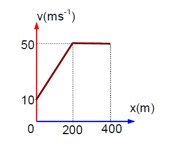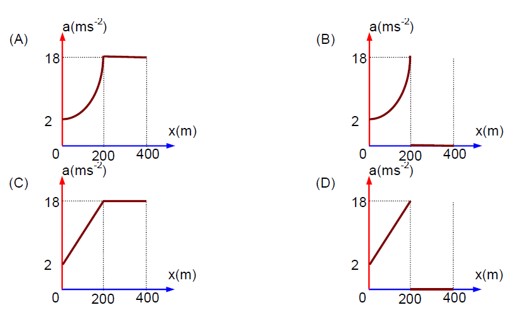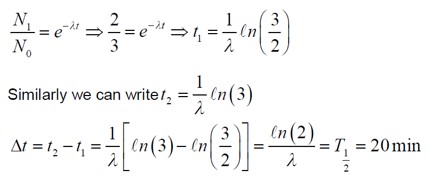Physics Motion in Straight Line
Get insights from 62 questions on Physics Motion in Straight Line, answered by students, alumni, and experts. You may also ask and answer any question you like about Physics Motion in Straight Line
Follow Ask QuestionQuestions
Discussions
Active Users
Followers
New answer posted
2 months agoContributor-Level 10
Area of OABS is A?
Area of SCD is A?
Distance = |A? | + |A? |
A? = (1/2) [13/3 + 1]4 = 32/3
A? = (1/2) * 5/3 * 2 = 5/3
Distance = |A? | + |A? |
= 32/3 + 5/3 = 37/3
New answer posted
2 months agoContributor-Level 10
h = u²/2g, u = √2gh
Now, S = h/3
S = ut + ½at²
h/3 = √2ght - ½gt²
t² - 2√ (2h/g)t + 2h/3g = 0
Using quadratic formula for t:
t = ( 2√ (2h/g) ± √ (8h/g) - 4 (2h/3g) / 2
t = √ (2h/g) ± √ (2h/g - 2h/3g) = √ (2h/g) ± √ (4h/3g)
t? /t? = (√ (2h/g) - √ (4h/3g) / (√ (2h/g) + √ (4h/3g)
t? /t? = (√2 - √ (4/3) / (√2 + √ (4/3) = (√6 - 2)/ (√6 + 2)
(Note: There is a calculation error in the provided solution. Re-evaluating the physics.)
h/3 = (√2gh)t - ½gt²
(g/2)t² - (√2gh)t + h/3 = 0
t = (√2gh ± √ (2gh - 4 (g/2) (h/3)/g = (√2gh ± √ (4gh/3)/g
t? /t? = (√2gh - 2√gh/√3)/ (√2gh + 2√gh/√3)
New answer posted
2 months agoContributor-Level 10
v =? t +? t²
ds/dt =? t +? t²
? this =? (? t +? t²)dt from 1 to 2
s = [? t²/2 +? t³/3] from 1 to 2
s = [? (2)²/2 +? (2)³/3] - [? (1)²/2 +? (1)³/3]
s = [2? + 8? /3] - [? /2 +? /3]
s = 3? /2 + 7? /3
New answer posted
2 months agoContributor-Level 10
By t = mx² + nx
dt/dx = 2mx + n
V = dx/dt = 1/ (2mx + n)
a = v (dv/dx) = V (d/dx (1/ (2mx+n) = V [-2m/ (2mx+n)²] = -2mV³
So, Retardation will be (2mv³)
New answer posted
2 months agoContributor-Level 9
Displacement in 4? second
= S? - S?
= (1/2)g [2n - 1]
= (1/2)g [2*4 - 1]
= (1/2) * 9.8 * 7
= 34.3m
As this distance matches with data given in question for position of next drop. So drops are falling at the rate of 1 drop/second.
New answer posted
2 months agoContributor-Level 10
Body is dropped from height 75m with initial velocity (upward) 10m/s
So, s = ut + ½ at²
-75 = 10t - ½ gt²
5t² - 10t - 75 = 0
By solving t = 5 sec.
In 5sec. balloon covered
h = 10 * 5 = 50m
Now height of balloon = 75 + 50 = 125m
New answer posted
2 months agoContributor-Level 10
For part AM, slope of v – t graph is constant but negative. For part MB, slope of v – t graph is constant but positive.
New answer posted
3 months agoContributor-Level 10
Assume the length of train be I and its acceleration be a.
Velocity when middle point crosses the post,
Taking an Exam? Selecting a College?
Get authentic answers from experts, students and alumni that you won't find anywhere else
Sign Up on ShikshaOn Shiksha, get access to
- 65k Colleges
- 1.2k Exams
- 679k Reviews
- 1800k Answers




